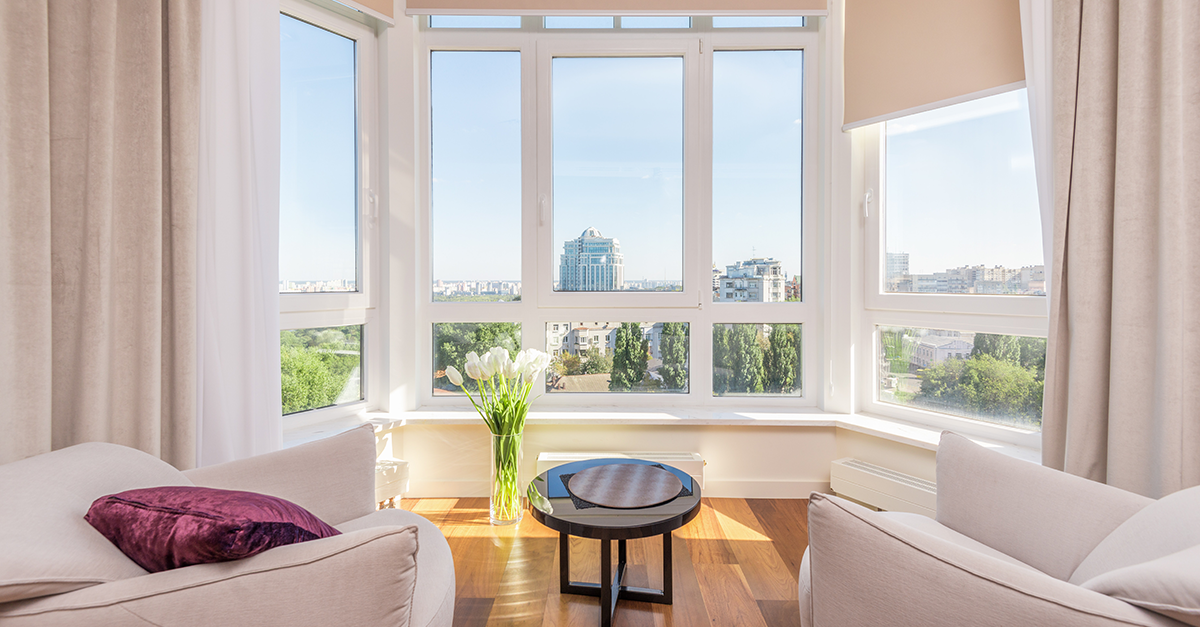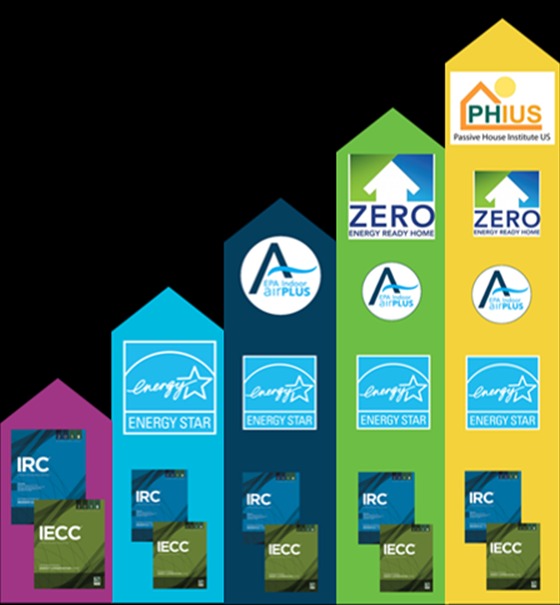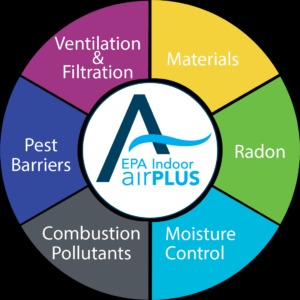

Blog
EPA is adding a second level to its Indoor airPLUS specification for homes and residential buildings: Indoor airPLUS version 2. What changes should we expect?

The US Environmental Protection Agency (EPA) began revising its Indoor AirPlus (IAP) specification for homes and residential buildings in early 2020. Since the first drafts of version 2, several factors have shaped the new standard, including the public’s hyper-awareness of indoor air quality (IAQ) during and post COVID, input from strategic partners, and considerations from multiple public comments.
The goal to improve IAQ across new and existing housing while addressing affordability and expanding access to healthy housing among disadvantaged populations will not change.
But a lot will change for building designers, developers, owners, and property managers that earn the Indoor AirPlus label for their buildings.
For starters, the program will now be written as Indoor AirPlus (previously “airPLUS”), and there are two levels of certification: Certified and Gold. EPA anticipates that version 2 will be available for use in fall 2024, and version 1 will be sunset in January 2026. During this overlap period, partners may opt to use either version.
Below, we’ve summarized the changes to expect from Indoor AirPlus version 2.
If you’re new to Indoor AirPlus and are looking for ways to improve IAQ and occupant health, you’re in the right place. We’re starting with an overview of indoor air pollutants and the history of Indoor AirPlus.
This blog post was originally published in June 2023. It has been updated based on the latest draft of Indoor AirPlus v2.
Americans spend up to 90% of their time indoors, where, according to EPA, they can be exposed to indoor air pollutants associated with irritation of the eyes, nose, and throat; headaches, dizziness, and fatigue; and respiratory diseases, heart disease, and cancer.
Asthma, the most common chronic disease among children according to the World Health Organization, can be triggered by indoor air pollutants. The National Institute of Health says that living in substandard housing often leads to exposure to triggers and higher rates of allergen sensitization. EPA identifies those triggers as:
At SWA, we work with these entities to make buildings perform better. While the goal is often to reduce energy usage, water usage, material consumption, and carbon emissions, these efforts are futile if building occupants don’t feel safe, healthy, and well.
Indoor AirPlus is one pathway to deliver healthier buildings. The specification was developed in 2008 to build upon the energy efficiency and durability measures in the ENERGY STAR® program.
Whereas ENERGY STAR is the next step to performing better than code, Indoor AirPlus (which requires ENERGY STAR as a base program) builds upon the indoor air quality, water management, and durability measures of ENERGY STAR. The next level evolved to Department of Energy’s (DOE’s) Zero Energy Ready Homes (ZERH) in 2013. Passive House Institute US (PHIUS) formed in 2007 and began requiring ZERH in March of 2015.

EPA drafted Indoor AirPlus version 2 to push the market forward while being mindful of added costs.
Building designers, developers, owners, and property management companies have direct control over measures within the Indoor AirPlus specifications. And the third-party verification requirements, which align with compliment programs like ENERGY STAR and ZERH, creates a comprehensive solution to addressing threats to indoor air quality.
During the development of version 2, and specifically, after considering partner and public feedback, EPA has fine-tuned the specifications to be relative, impactful, and achievable.
Here are a few of the most significant proposed changes for version 2:
Two levels: There will be two levels of certification. The base specification will not require ENERGY STAR certification and will have a lot of requirements accommodating existing homes and multifamily buildings.
Performance based: The more rigorous level, Gold, will require ENERGY STAR certification and incorporate additional performance-based metrics.
Radon risk strategies: Radon mitigation or awareness measures must be implemented, regardless of the radon zone in which the project is located. Radon is the number one cause of lung cancer among non-smokers and causes more than 20,000 deaths per year. Radon Zone 1 projects must install an active system, or a passive system with tested results below 4 picocuries per liter (pCi/l). Radon Zone 2 projects may opt to install a system or test. And Radon Zone 3 project teams must, at the very least, share the EPA’s Citizen’s Guide to Radon (PDF) with residents.
IAQ monitoring: Considering public comments regarding the cost, availability, and accuracy of IAQ monitors, EPA changed air quality monitoring in rooms that contain solid fuel-burning appliances, like wood fireplaces, from a requirement to a recommendation in the final draft.
Water detection: Water leak detection or a floor drain will be required for below-grade spaces, like basements. This includes a recommendation that the leak detection can shut off the water supply if a leak occurs.
An advisory is a recommendation for better or best practice. EPA uses advisories to introduce strategies and concepts that may become requirements in future revisions of the specification. EPA includes an advisory if the practice is important but may place undue burden on the builder or rater or the technology isn’t yet readily available.
For example, IAP requires that wood framing and insulation not be enclosed if they have a high moisture content and advises that the lumber moisture content be ≤18%. But it does not require builders to measure moisture content on all framing members.
EPA has increased and enhanced the advisories in IAP v2, creating an encyclopedia of high-performance building best practices.
The following enhancements coming in version 2 will help achieve optimal indoor air quality:
Heating and cooling (HAC) equipment: For Gold level, all HAC equipment and ductwork must be located within the thermal and air boundary. There are several practical exceptions to this requirement, such as ducts ≤ 10 feet and duct leakage tested ≤ 1 CFM25 per 100sf of conditioned floor area.
Ventilation: Mechanical ventilation must be installed in each dwelling unit (Certified) and the system must be balanced (Gold).
Filters: Filters for ventilation systems must be MERV 8 (Certified) or MERV 13 (Gold). Filters for ducted HAC systems must be MERV 11 (Certified) or MERV 13 (Gold).
Portable air cleaners: Non-ducted (i.e., mini-split, hydronic, etc.) heating and cooling systems must also have stand-alone portable air cleaners for each of the two largest living spaces.
Combustion pollutant control: No combustion equipment can be used within the home’s pressure boundary unless mechanically drafted or direct-vented (Gold).
Emissions standards: Material emissions must meet rigorous California Department of Public Health (CDPH) testing standards.

Indoor AirPlus is available for any residential project, regardless of size or height. While Version 2 won’t require ENERGY STAR for Certified, single-family homes and duplexes looking to achieve Gold will need to earn a label under the ENERGY STAR Homes program. For all other residential buildings, that means the ENERGY STAR Multifamily New Construction (ESMFNC).
Raters are transitioning from ESMFNC v1.1 to v1.2 since the 45L incentive, updated in the recent Inflation Reduction Act, will require ESMFNC v1.2.
The recently released ZERH v2 program drives all-electric buildings, requires electric vehicle-ready charging, tighter air-leakage testing thresholds, and more efficient equipment requirements.
The ENERGY STAR program’s commitment to no-less-than 10% better than code means that each next-step program—Indoor AirPlus, ZERH, and PHIUS—will continue to build rigor and results into their programs.
EPA’s technical advisory team has weighed valuable stakeholder feedback while meeting the challenge of improving IAQ and increasing program participation. The team has also worked closely with the ENERGY STAR and ZERH teams to ensure the programs continue to be symbiotic and stackable.
SWA is proud to play a role in the development of Indoor AirPlus version 2. SWA became an Indoor AirPlus partner in 2011 and has received the Indoor AirPlus Leader Award for 12 consecutive years.
Gayathri Vijayakumar‘s experience providing technical support to ENERGY STAR and as a member of the 2024 IECC development committee has been invaluable during the four revisions of Indoor AirPlus v1 and with increased contributions through the development of Indoor AirPlus version 2. SWA’s Director of Building Enclosure Services, Bill Zoeller, has given critical feedback about moisture management and durability items. Scott Pusey has weighed in on ventilation and testing procedure issues. He, along with Steve Klocke and several SWA raters, gave feedback from a field person’s perspective. That pragmatic approach is critical to the development of standards and specifications where strategies are practical and implementable in the field.
Have questions about Indoor AirPlus, IAQ, or occupant health? Fill out our contact form to speak to one of our IAQ experts.
Contributor: Karla Butterfield, Sustainability Director on SWA’s Sustainable Building Services Team
Steven Winter Associates